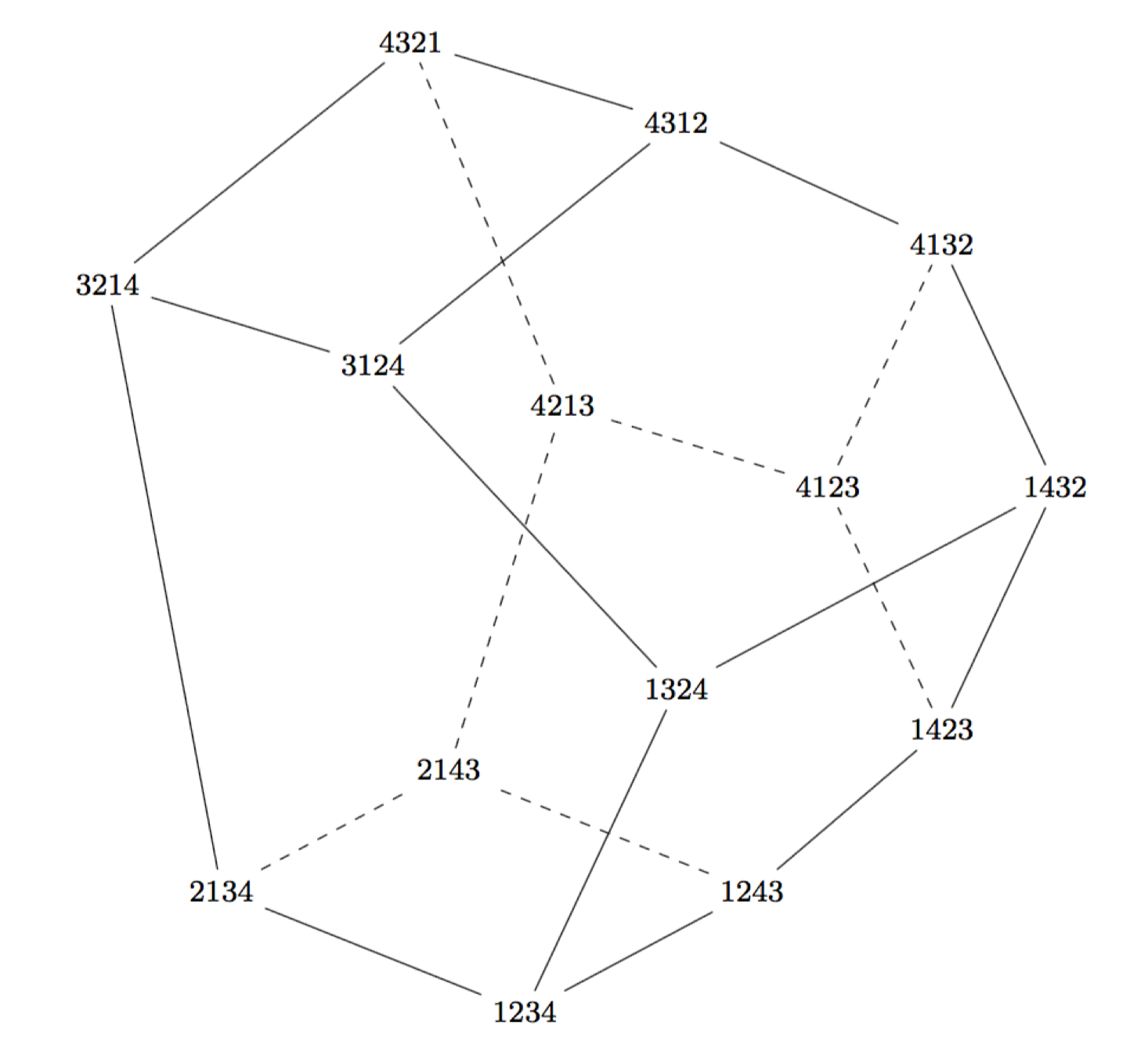Topics in Combinatorics
Welcome
Welcome to the course web page for the Fall 2016 manifestation of MAT 526: Topics in Combinatorics at Northern Arizona University. We will be using the recently published textbook Eulerian Numbers by T. Petersen (DePaul University).
Course Info
Title: MAT 526: Topics in CombinatoricsSemester: Spring 2016
Credits: 3
Section: 1
Time: MWF at 11:30AM-12:20PM
Location: AMB 207
Instructor Info
Dana C. Ernst, PhDAMB 176
10:15-11:15 MWF and 9-10 TTh (or by appointment)
dana.ernst@nau.edu
928.523.6852
dcernst.github.io/teaching/mat526f16
Proposed Topics
The tentative plan is to cover Chapters 1-6 and 11 of Eulerian Numbers, but we may cover more or less depending on time and interests. Here are the proposed topics:
- Eulerian numbers
- Binomial coefficients
- Generating functions
- Classical Eulerian numbers
- Eulerian polynomials
- Two important identities
- Exponential generating function
- Narayana numbers
- Catalan numbers
- Pattern-avoiding permutations
- Narayana numbers
- Dyck paths
- Planar binary trees
- Noncrossing partitions
- Partially ordered sets
- Basic definitions and terminology
- Labeled posets and P-partitions
- The shard intersection order
- The lattice of noncrossing partitions
- Absolute order and Noncrossing partitions
- Gamma-nonnegativity
- The idea of gamma-nonnegativity
- Gamma-nonnegativity for Eulerian numbers
- Gamma-nonnegativity for Narayana numbers
- Palindromicity, unimodality, and the gamma basis
- Computing the gamma vector
- Real roots and log-concavity
- Symmetric boolean decomposition
- Weak order, hyperplane arrangements, and the Tamari lattice
- Inversions
- The weak order
- The braid arrangement
- Euclidean hyperplane arrangements
- Products of faces and the weak order on chambers
- Set compositions
- The Tamari lattice
- Rooted planar trees and faces of the associahedron
- Refined enumeration
- The idea of a $q$-analogue
- Lattice paths by area
- Lattice paths by major index
- Euler-Mahonian distributions
- Descents and major index
- $q$-Catalan numbers
- $q$-Narayana numbers
- Dyck paths by area
- Coxeter groups
- The symmetric group
- Finite Coxeter groups: generators and relations
- $W$-Mahonian distribution
- $W$-Eulerian numbers
- Finite reflection groups and root systems
- The Coxeter arrangement and the Coxeter complex
- Action of $W$ and cosets of parabolic subgroups
- Counting faces in the Coxeter complex
- The $W$-Euler-Mahonian distribution
- The weak order
- The shard intersection order

Dana C. Ernst
Mathematics & Teaching
Northern Arizona University
Flagstaff, AZ
Website
928.523.6852
Instagram
Strava
GitHub
arXiv
ResearchGate
LinkedIn
Mendeley
Google Scholar
Impact Story
ORCID
About This Site
This website was created using GitHub Pages and Jekyll together with Twitter Bootstrap.
Unless stated otherwise, content on this site is licensed under a Creative Commons Attribution-Share Alike 4.0 International License.
The views expressed on this site are my own and are not necessarily shared by my employer Northern Arizona University.
The source code is on GitHub.
Land Acknowledgement
Flagstaff and NAU sit at the base of the San Francisco Peaks, on homelands sacred to Native Americans throughout the region. The Peaks, which includes Humphreys Peak (12,633 feet), the highest point in Arizona, have religious significance to several Native American tribes. In particular, the Peaks form the Diné (Navajo) sacred mountain of the west, called Dook'o'oosłííd, which means "the summit that never melts". The Hopi name for the Peaks is Nuva'tukya'ovi, which translates to "place-of-snow-on-the-very-top". The land in the area surrounding Flagstaff is the ancestral homeland of the Hopi, Ndee/Nnēē (Western Apache), Yavapai, A:shiwi (Zuni Pueblo), and Diné (Navajo). We honor their past, present, and future generations, who have lived here for millennia and will forever call this place home.
